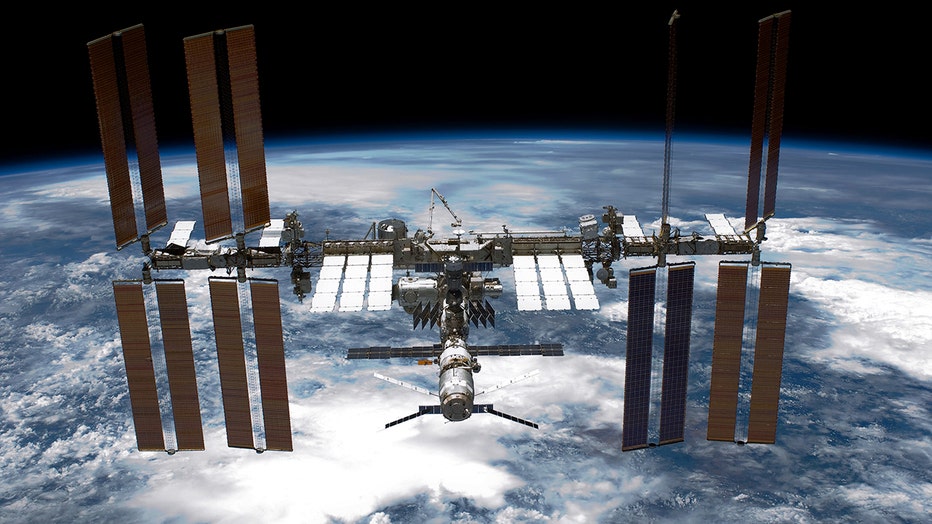NASA planning new spacecraft that will deorbit International Space Station
WASHINGTON - The National Aeronautics and Space Administration (NASA) has released a request for proposal to design a U.S. Deorbit Vehicle – a spacecraft meant to safely deorbit the International Space Station (ISS) as part of its planned retirement.
Since 1998, five space agencies (the Canadian Space Agency, the European Space Agency, the Japan Aerospace Exploration Agency, the National Aeronautics and Space Administration, and the State Space Corporation "Roscosmos") have operated the ISS, with each responsible for managing and controlling the hardware it provides, according to NASA.
The agencies have committed to operating the station through 2030, and Russia through at least 2028.
At the conclusion of the ISS, NASA said the station will be deorbited in a controlled manner to avoid populated areas.

In this handout provided by National Aeronautics and Space Administration (NASA), back dropped by planet Earth the International Space Station (ISS) is seen from NASA space shuttle Endeavour after the station and shuttle began their post-undocking re
According to the space agency, the United States plans to transition its operations in low Earth orbit to commercially owned and operated platforms to ensure continued access and presence in space for research, technology development and international collaboration.
NASA and its partners have previously studied deorbit requirements and developed a preliminary strategy and action plan to support deorbit operations.
"These efforts now indicate a new spacecraft solution would provide more robust capabilities for responsible deorbit," NASA wrote in a press release, adding the new U.S. Deorbit Vehicle (USDV) spacecraft design must function on its first flight and have sufficient redundancy and anomaly recovery capability to continue the critical deorbit burn.
RELATED: NASA reveals latest weapon to 'search the heavens' for UFOs, aliens
"As with any development effort of this size, the USDV will take years to develop, test, and certify.
The International Space Station is the largest modular space station in low Earth orbit.
The International Space Station Program has served more than two decades, with assembly missions starting in 1998. NASA said it is also the third-brightest object in the sky and easy to spot if you know when to look up.
This story was reported from Los Angeles.

